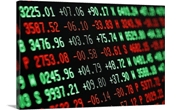Futures

Feldstein on Steel Futures and Managing Risk, Creating Opportunities
Written by Laura Miller
June 22, 2022
The word ‘risk’ often has a negative connotation and gets a bad rap. But there are two sides to risk – the dark side and the light side, the bad and the good, the downside and the upside. When it comes to price risk in the steel market, you can either just accept it or you can transfer it. Choosing how you manage to transfer price risk in the steel business is what’s important, according to David Feldstein, president of Rock Trading Advisors.
“You’re better off with the ability to control risk on your terms rather than just accepting price risk as a cost to doing business,” Feldstein explained on an American Metals Supply Chain Institute (AMSCI) webinar on Wednesday titled “Mitigating Risk in Turbulent Times.”
Getting involved in the steel futures markets and managing your price risk can open up a whole world of opportunities for your business, he said.
The Chicago Metals Exchange (CME) experienced significant growth in 2021 as the number of participants in the hot-rolled coil futures market more than doubled, Feldstein said. More and more financial industry participants are entering the market, including hedge funds and derivatives trading companies. Now, with more liquidity in the futures market than when it was first getting started, opportunities are expanding for companies wanting to get involved with hedging their price risk.
Opportunities abound in steel futures for the three types of players: commercial hedgers (mills, service centers, OEMs), speculators (traders), and financial intermediaries (banks and trading desks). Because the three groups have different incentives and goals, it creates opportunities for all involved, according to Feldstein.
There are three main ways for a company to get involved in the futures markets: Go through a bank trading desk, set up an internal trading desk at your own company, or outsource it to an advisor.
Feldstein said his company, Rock Trading Advisors, is like a financial advisor but for commercial interests, providing customized solutions to managing price risk.
When inquired as to whether steel mills are participating in the futures market, Feldstein noted that nothing has been explicitly discussed yet. “Although hedging info could be buried deep within a company’s financial records, until a mill comes out and says that they are actively participating in futures, “we just won’t know for sure,” he said.
By Laura Miller, Laura@SteelMarketUpdate.com

Laura Miller
Read more from Laura MillerLatest in Futures

HR Futures: Summertime blues
Coming out of the holiday market and long weekend, it seems the HRC futures market has caught some post-vacation blues.

HR Futures: Financial players bullish on price, physical market participants not
We can interpret that managed money still has expectations of price strength while physical participants are running closer to a balance on a net basis.

HR Futures: Oil, Mideast tensions fail to move steel
After a hot start to June, the CME ferrous derivatives complex has cooled down.

HRC Futures: Could oil, ag price spikes drive steel higher too?
Could we see an abrupt shift now that oil prices have spiked higher? Will we see a rebound in the rig count? Will this create a snap-loading effect (think waterski rope), where the industry suddenly does a 180-degree turn? If so, will that bring with it increased demand for steel products used by the energy industry?

Flack: HR futures still on a wild ride
Never a dull moment in today's HR futures market.
